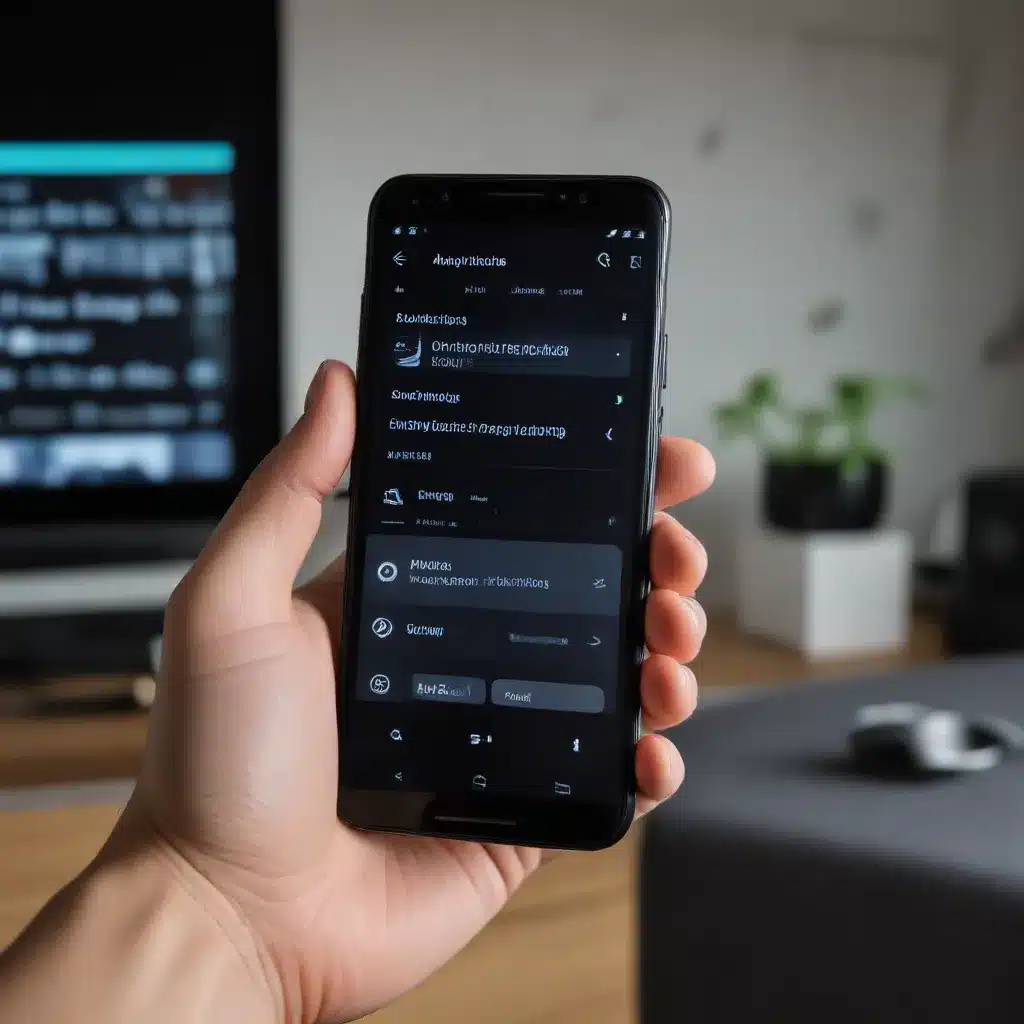
As an experienced IT professional, I’m excited to share practical tips and in-depth insights to help you elevate your Android audio experience. Whether you’re an audiophile seeking richer sound or simply want to enjoy your mobile content with greater clarity and immersion, this guide will equip you with the knowledge to optimize your Android device’s audio capabilities.
Unleash the Power of Dolby Atmos
One of the most powerful audio enhancement tools available for Android is Dolby Atmos. This revolutionary technology brings a truly cinematic experience to your mobile device, delivering a multi-dimensional, surround sound that envelops you in the action.
Dolby Atmos works by treating individual sounds as independent audio objects, allowing them to be precisely positioned and moved around the listener. This creates a heightened sense of realism and depth, making it feel as if the sounds are coming from all around you, including overhead. Unlike traditional channel-based audio, Dolby Atmos gives filmmakers and content creators the freedom to place sounds exactly where they want them, immersing you in the scene.
“Dolby Atmos brings astonishing clarity, detail, and dimensionality to your mobile life — it’s the bigger, better sound on the go you’ve always wanted.” – Dolby
To experience the full benefits of Dolby Atmos on your Android device, you’ll need to ensure your hardware and software are compatible. Many modern Android smartphones and tablets come equipped with Dolby Atmos support, often indicated by the Dolby logo or “Dolby Atmos” branding.
If your device supports Dolby Atmos, you can typically enable it by navigating to your device’s sound settings and selecting the “Dolby Atmos” or “Immersive Sound” option. This will automatically optimize the audio processing for a more immersive and dynamic listening experience.
It’s worth noting that the effectiveness of Dolby Atmos can vary depending on the content you’re consuming and the quality of your audio equipment. Some users have reported that Dolby Atmos can enhance certain types of music, such as orchestral or action-heavy soundtracks, while others have found it less beneficial for other genres.
To get the most out of Dolby Atmos, it’s recommended to experiment with the settings and try it with a variety of content. You may find that certain Dolby Atmos presets, like “Music” or “Movie,” provide a more satisfactory listening experience depending on your preferences.
Optimizing Android Audio Beyond Dolby Atmos
While Dolby Atmos is a powerful tool, it’s not the only way to enhance your Android audio experience. Here are some additional tips and tricks to help you get the most out of your device’s sound capabilities:
Disable Equalizers and Sound Enhancements
If your Android device comes with built-in equalizers or sound enhancement features, it’s often best to disable them when using Dolby Atmos. These additional processing layers can sometimes interfere with or even degrade the Dolby Atmos experience, leading to a less natural and immersive sound.
In the r/SonyHeadphones subreddit, users have reported that disabling the EQ in the Headphones app, disabling DSEE, and enabling the “Prefer Sound Quality” option can significantly improve the audio quality when paired with Dolby Atmos.
Leverage Third-Party Audio Apps
While the built-in audio settings on your Android device can be a good starting point, you may find that third-party audio apps offer more advanced customization and optimization options. One popular app mentioned in the r/Android subreddit is Wavelet, which allows you to use the AutoEQ feature to further fine-tune the sound profile for your specific headphones or speakers.
By selecting your headset in the AutoEQ section of Wavelet, you can enjoy a more tailored audio experience that complements the Dolby Atmos processing on your Android device.
Optimize for Different Content Types
As mentioned earlier, the effectiveness of Dolby Atmos can vary depending on the type of content you’re listening to. To get the best results, you may want to experiment with different Dolby Atmos presets or settings.
For example, the r/Android subreddit post suggests that Dolby Atmos may not be the best choice for music listening, as it can sometimes affect the bass or introduce unwanted volume changes. In this case, disabling Dolby Atmos or switching to a “Music” preset may provide a more enjoyable listening experience.
On the other hand, Dolby Atmos can be particularly beneficial for immersive audio experiences, such as movies, TV shows, or gaming. The Dolby website highlights how Dolby Atmos can create a more engaging and lifelike soundscape for these types of content, with sounds seemingly moving all around and above you.
By tailoring your audio settings to the specific content you’re enjoying, you can ensure you’re getting the best possible sound quality and immersion from your Android device.
Explore Dolby Atmos and Beyond for Exceptional Android Audio
In the world of mobile audio, Dolby Atmos stands out as a transformative technology that can elevate your Android experience. By leveraging its advanced spatial audio processing, you can immerse yourself in a truly cinematic soundscape, with sounds that seem to emanate from every direction.
However, Dolby Atmos is just one piece of the puzzle. By combining it with strategic audio optimizations, third-party apps, and a content-specific approach, you can unlock the full potential of your Android device’s audio capabilities. Whether you’re an audiophile or simply someone who wants to enjoy a more engaging and immersive mobile entertainment experience, these tips and insights will help you enhance your Android audio like never before.
Remember, the ITFix blog is always here to provide practical solutions and cutting-edge information to help you stay ahead of the technology curve. Keep exploring, experimenting, and elevating your Android audio experience to new heights.












